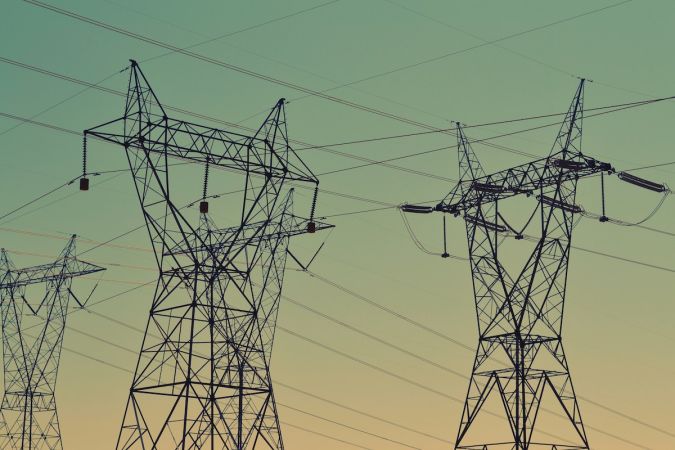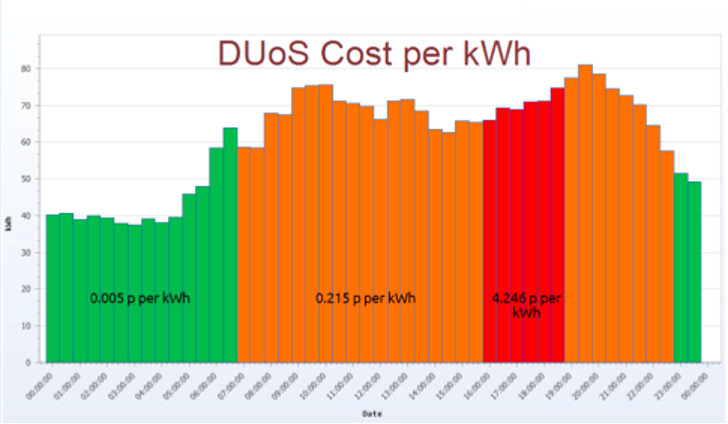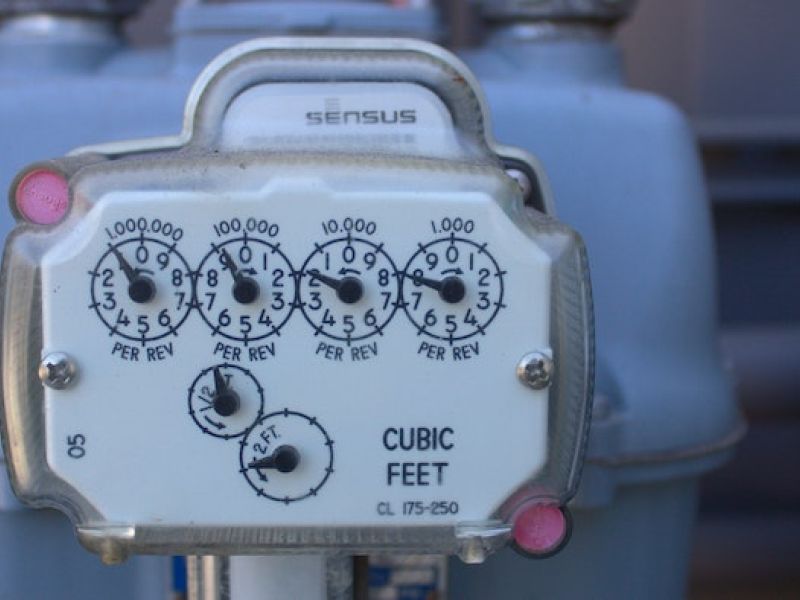
Non-Commodity Electricity Charges – DUoS and TNUoS Explained
What are Non-Commodity Charges?
Non-commodity charges are additional costs on a business electricity bill. These additional charges relate to the distribution and transmission of electricity, system balancing, and other network costs, and are in addition to the actual costs of energy consumed. In some cases, non-commodity charges have been known to be greater than actual energy consumption costs.
As non-commodity charges are a significant proportion of total electricity costs, understanding these charges is crucial for businesses aiming to optimise their energy expenses effectively. This article explores two major non-commodity charges: Distribution Use of System (DUoS) and Transmission Network Use of System (TNUoS) charges.
We’ll explain their context within business power usage and offer strategies to reduce these charges effectively.
If you are worried about your energy bill breakdown and charges, having an energy consultant validate your bill is worthwhile as energy suppliers have been known to make mistakes on their invoices.
How Suppliers Buy Electricity
Energy suppliers purchase electricity from generation companies in these primary ways:
- Wholesale markets
- Direct power purchase agreements
- Spot market purchases
By combining these methods, energy companies aim to balance cost, supply reliability, and regulatory compliance.
An energy supplier is charged by the National Transmission Network and Distribution Network Operators (DNOs) and Independent DNOs, who deliver the electricity on to consumer sites.
Suppliers purchase their energy via varied trading strategies known as optimisation, the outcome of this optimisation process dictates the supplier’s ability to compete with lower pricing. The optimisation process of a suppliers procurement strategy looks at factors like market prices, demand fluctuations, and regulatory requirements. By using hedging techniques and risk management practices, suppliers aim to secure stable and competitive prices, ensuring a reliable supply while managing costs effectively.
This complex process is essential for maintaining a balanced and efficient electricity supply system
Transmission Networks
The main function of transmission network is to ensure the even distribution of energy around the country. Transmission networks are the high-voltage power lines and infrastructure that transport electricity from power plants to DNOs. Transmissions Networks are the electricity pylons you see around the country and can also have underground lines and are managed by the national grid across the UK.
These networks ensure that electricity is efficiently delivered over long distances to meet regional demand.
They play a critical role in maintaining the stability and reliability of the power grid by balancing supply and demand, facilitating energy trading, and integrating renewable energy sources. The infrastructure includes substations, transformers, and control systems essential for the seamless operation of the electricity market.
What is DUoS?
DUoS stands for ‘Distribution Use of System’ and are charges you will see on your electricity bill which are imposed by DNOs and Independent DNOs for using the local electricity distribution network. These charges cover the costs of maintaining, upgrading, and operating the infrastructure required to deliver electricity from the transmission network to end consumers.
How are DUoS charges Calculated?
DUoS charges are based on multiple factors including your share of demand on the transmission network. This charge is comprised of several components:
- Availability Charge: Also known as KVA or Agreed Supply Capacity (ASC) charge, this is the fee for the power capacity held available for a supply point, charged daily in £/kVa.
- Excess Availability Charge: Applied if the Agreed Supply Capacity is exceeded. Ensuring your kVA is correctly set can prevent unnecessary costs.
- Reactive Power Charge: For non-working power used by equipment like motors and transformers, charged if it exceeds DNO limits. Installing Power Factor Correction equipment can mitigate these costs.
- Daily/Standing Charge: A fixed fee set by your supplier to cover the costs of distributing and supplying energy, as well as maintaining the infrastructure.
- Unit Rates: Charges based on consumption, divided into Red (peak), Amber (daytime), and Green (off-peak) time bands, varying by region and supplier. The following common time bands used are:
- Red– 16.00-19.00 Monday-Friday (peak)
- Amber–07.00-16.00 then 19.00-22.00 Monday-Friday, 16.00-19.00 Saturday-Sunday (daytime)
- Green – 00.00-07.00 then 16.00-19.00 Monday-Friday, 00.00-16.00 then 19.00-0.00 Saturday-Sunday (off-peak)
The example below shows the DUoS charge bands for the London Power Network Area

Peak times incur higher rates to manage demand and encourage off-peak usage. These charges ensure the network remains reliable and efficient for all users. Each Network Operator has different rates, and the cost varies with the time of usage.
In addition, each Distribution Network Operator (DNO) sets the rates for their region, reflecting the local infrastructure and maintenance costs. The goal is to distribute the expenses fairly among users while ensuring network reliability. To determine applicable rates, find the ‘Line Loss Factor’ (LLF) for your site, which can be located by the last three digits of your electricity supply’s Meter Point Administration Number (MPAN). The MPAN, a 13-digit unique
DNOs are regulated by OFGEM, (Office of Gas and Electricity Markets) to ensure that consumers receive reliable and fairly priced energy services.
What is TNUoS?
TNUoS stands for (Transmission Network Use of System) and are charges on your energy bill imposed by the transmission network to help cover their costs of maintaining and operating the high-voltage transmission network that transports electricity from power stations to local distribution networks.
These charges are applied to both generators and consumers, ensuring that the infrastructure remains robust and capable of meeting national electricity demands.
How are TNUoS charges Calculated?
Each year in March, National Grid selects the three half-hour periods with the highest demand from the previous November to February. An average of your usage during these periods, known as the Triad, is calculated. This figure is doubled to reflect a full hour’s usage and then multiplied by the relevant regional TNUoS rate to determine the final annual charge. If energy is used strategically during the Triad period, you will be able to lower TNUoS your charge.
Recently, TNUoS charges have increased due to higher transmission network costs. This rise is driven by the need to upgrade aging infrastructure and accommodate more renewable energy generation.
High Voltage Assets
High voltage assets refer to the equipment and infrastructure used in the transmission of electricity at high voltages, including transformers, substations, and high-voltage power lines.
Businesses connected to high voltage networks might be subject to the Extra-high Voltage Distribution Charging Methodology (EDCM). The EDCM is used to calculate DUoS charges for large users connected to the distribution network at higher voltages.
These charges consider the specific costs associated with maintaining and operating the high-voltage infrastructure and can vary significantly based on location and usage patterns.
Impact of DUoS and TNUoS Charges on Businesses
DUoS and TNUoS charges significantly influence a business’s operational costs. These non-commodity charges can make up a substantial portion of the total electricity bill. High charges during peak periods can increase costs, impacting businesses’ profitability.
It is important for businesses to understand and manage these charges to optimise their energy expenses.
By strategically managing their energy use, businesses can reduce these charges, resulting in lower overall energy costs and improved financial performance.
How can Businesses Reduce DUoS and TNUoS Charges?
As mentioned above, if you are able to reduce your DUoS or TNUoS charges you are able to lower a proportion of your business energy costs. To reduce these charges it is key to ensure you are tracking your energy consumption, as you can then track your DNUoS and TNUoS charges. To do this you’ll need to have an energy management system and monitoring tools in place that have real time usage data, and the ability to forecast and predict future changes based on historical usage. With tracking in place, you can reduce your charges in the following ways:
Reducing DUoS Charges:
- Shift Operations: Move high-energy activities to off-peak periods to take advantage of lower green band rates.
- Energy Audits: Regularly conduct energy audits to identify inefficiencies and opportunities for savings.
- Energy Efficiency: Implement energy-saving measures and technologies to reduce overall consumption based on your energy audit.
- Load Management: Use energy management systems to monitor and adjust usage patterns effectively.
- Flexible Contracts: Negotiate flexible energy contracts that allow for adjustments based on changing consumption patterns.
- Renewable Integration: Incorporate renewable energy sources to reduce dependency on the grid during peak times.
- Employee Training: Educate employees about energy-saving practices and the importance of efficient energy use. Implementing these best practices can help businesses reduce costs and improve energy efficiency.
- Capacity Planning and reviews: Optimise and review the contracted capacity and the amount you use to avoid excess charges. If you are using less you may be able to agree a lower capacity allowance with your supplier.
Reducing TNUoS Charges:
- Location Optimisation: Consider the impact of location on charges and adjust operations if possible.
- Demand Response: Participate in demand response programs to manage and reduce peak load contributions.
What is BSC Modification P272?
BSC Modification P272 is a regulation, implemented on April 1, 2017, that mandates the way electricity suppliers calculate electricity consumption for businesses within a specific energy use, defined as profile classes 5-8, and results in sites being moved from non-half hourly energy meter (NHH) to half hourly metering (HH).
This change introduced a new way to how businesses are charged for DUoS and TNUoS, affecting the cost of these charges and the amounts businesses pay on their electricity bills. As a result, some businesses will experience an increase in charges, while others may see a decrease.
This change aims to improve billing accuracy and encourage efficient energy use by basing DUoS and TNUoS charges on actual half-hourly consumption data rather than estimates. The modification helps businesses gain a clearer understanding of their energy usage patterns, allowing for better management and optimisation of electricity costs. This regulatory change highlights the importance of accurate data in energy management.
Government Incentives and Support
The UK government announced the British Industry Supercharger (BIS) on the 23rd February 2023, a set of measures to make Britain’s strategic Energy Intensive Industries (EIIs) more competitive across Europe. Part of these measures include the EII Network Charging Compensation (NCC) Scheme, which will permit eligible energy-intensive users to recover 60% of eligible network charging costs, including TNUoS and DUoS. Pending the necessary legislation, the scheme is expected to launch in April 2025, with support for EIIs backdated to April 1, 2024.
Future Trends in Energy Charges
As the energy landscape evolves, several trends are likely to impact DUoS and TNUoS charges. Increased integration of renewable energy sources, advancements in smart grid technology, and evolving regulatory frameworks will shape future pricing structures.
Businesses can expect more dynamic pricing models, reflecting real-time grid conditions and incentivising demand-side management. Staying informed about these trends and adopting flexible, adaptive energy strategies will be crucial.
How an Energy Consultant can Help
When managing DUoS and TNUoS charges, businesses often make common mistakes such as neglecting to monitor usage patterns, failing to shift operations to off-peak times, and overlooking the benefits of energy management systems. Another frequent error is not optimising contracted capacity, which can lead to excess charges. Businesses may miss out on available government incentives and support programs. By working with a specialist energy consultant such as Professional Energy Services, we can support you by helping you avoid these mistakes that can result in significant cost savings and more efficient energy use. Contact us today to speak to a member of our team.
Related Posts

Targeted Charging Review (TCR) – Everything you need to know

Everything you need to know about your Business Energy Bill
